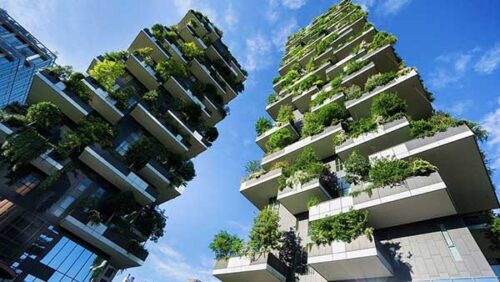5 Circular Economy Business Models that You Need to Know
You might want to jump on the bandwagon but don’t know where to start.
Yes, you know that there are three principles of circular economy:
- Scratch out waste and pollution from the design plan
- Keep products and materials in use – as long as you can
- Regenerate natural systems, use renewable energy sources
You also know that a great, well-planned business model is needed not only to achieve a sustainable circular economy but also to attract customers, opening new job opportunities, and (maybe) green sustainable investment. But what kind of business models are there to explore about?
Here are 5 examples of circular economy business models a startup can think of:
#1 Product-as-a-Service (PaaS)
It’s a simple thing: if you don’t want to add waste into the environment, make a business that doesn’t produce waste.
PaaS, or also known as Product Service prioritizes experience over ownership of a product. It’s a combination of products that’s followed by services from the producer.

Product Service is totally different from the linear economy that inclines on the take-make-waste or dispose kind of business model. With Product Service, the clients could subscribe to the advantages of the product along with the maintenance service from the producers.
Instead of having an item that might be less useful through time and might end as a waste in the end, the clients could rely on the producers to continually improve the quality and longevity of the products.
This type of business model could be implemented into a quite wide-range of products such as electronic items, original equipment manufacturers, and furniture.
#2 Renewability
When in doubt, get your business model back into the basis of a circular economy: establish a business that could grow from renewable sources of energy and recyclable materials – with no or minimal pollution generated in the end.
Several examples of renewable energy are hydropower, wind, biomass, geothermal, and solar. Recyclable materials mainly come from organic materials with shorter degradation times.
Pay full attention to the heart of product design and manufacturing. Do your research, create connections, and check for all the possible outcomes.
The challenge might appear from the technological and price factors, but if you could find a clean, environmentally-friendly business model that meets your users’ demand, then it’s worthy to be considered as a business plan.
#3 Sharing Platforms
If maintaining the subscription and quality of a product is not what you’re looking for, but you still wish for a business model that produces no waste, you might want to consider establishing a sharing platform.
Sharing platform is a circular economy business model that encourages clients to collaborate with each other by renting or by using a product together. The main idea is to increase the utility and value of a product optimally so we could reduce the number of waste that ends up in the landfill.
Several businesses that use a sharing platform business model are Uber and AirBnB. It’s also known as the peer-to-peer (P2P) business model.

#4 Product-life Extension
Just to be clear: product-life extension is totally different from product-line extension.
Both Product-life Extension and Product-as-a-Service aim to prolong the life of the product that is used by the consumers. The difference is that Product-as-a-Service lets the customers subscribe to the use of a product that will continually be maintained and improved by the producer, whereas product-life-extension lets the consumers buy and own a product but with a longer time of use.
The easiest example would be when you think about a disposable razor made from the combination of metal and plastic. One day, your brand decided to launch a reusable razor made from only stainless steel. To further ensure the recyclability of the product and to prevent it from ending up in the landfill, your company could also build a great customer care and easy-to-find recycling center.
The key of Product-Life Extension is to explore and look deeper into the cycle of a common product or material and to wonder what part of the business model that you could improve to prolong the use of the product.
#5 Resource Efficiency & Recycling
Renewability talks about including the use of renewable energy and renewable material in the business model, but resource efficiency is more about reducing and minimizing the use of non-renewable resources in the business model plan – especially for the purpose of recycling and reusing the material for production.
Because that’s what circular economy is all about: to keep the material in a closed-loop cycle for as long as we can.
The ideal way would be using renewable materials that are degraded easily, but the reality is that we still need the use of several non-renewable resources like plastic. The best that we can do is to make sure that we could use the materials several times with a minimum quality decrease.

———–
Still thinking on what to improve from your existing business model? Like we always said: in a circular economy, collaboration accelerates progress.
You may check one of Waste4Change’s consultant services: Solid Waste Management Research to help you define your waste management problem and find solutions for it.
Reference:
- https://www.sitra.fi/en/projects/interesting-companies-circular-economy-finland/#what-is-it-about
- https://www.firmhouse.com/blog/what-is-product-as-a-service-paas
- https://medium.com/global-intersection/sharing-economy-shaking-up-traditional-business-models-dce017c6b90 https://www.greenbiz.com/article/extending-product-life-build-circular-economy



